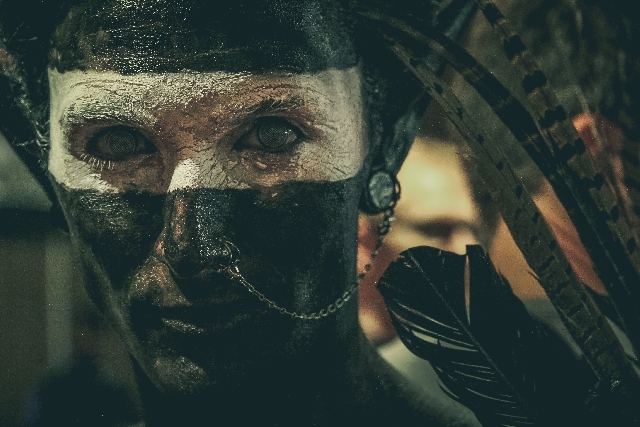Negosentro | 6 Things To Know About SFX Makeup | When people think about Special Effects Makeup, they usually think about lots of blood and gore! While that is definitely part of the job, there is so much more to the world of special effects (SFX) makeup than you might think!
Special Effects makeup can range from a fake nose to a swollen eye, to adding jowls to someone’s face, to full face and body prosthetics, to creating gory wounds and injuries, to creating fake dead bodies or limbs. The possibilities are absolutely endless!
Here are some simple things you need to know when thinking about trying out special effects makeup!
Safety First!
You tend to be using lots of different chemicals, adhesives and solvents when playing around with special effects. Make sure you read all instructions and labels properly before you start using any of the products to make sure you are using them correctly and safely. It is also important to make sure you use the correct Personal Protective Equipment (PPE) so that you don’t hurt yourself.
Patch testing is a great way to ensure that you aren’t allergic to a product before using it. Simply put a small dab of your new product on either your wrist, inside your elbow or behind your ear and wait 10-15 minutes to see if any redness, itching or burning occurs. If you do have a reaction, remove the product immediately, and apply a soothing cream. If there is no reaction you are safe to go ahead and use the product.
Layering
Special effects makeup is all about layering. Especially with wounds and injuries, building your colours in layers really helps sell the look as opposed to going hard and fast with your colour application. Start with your lighter colours and build them up into your deeper colours for the best results.
Texture
Don’t be afraid of texture when it comes to special effects makeup! Adding texture by using different applicators (such as sponges, different types of brushes, your fingers) can really make your special effects makeup come to life. Be careful not to blend your colours too much as that is rarely a detail found in wounds or injuries. Use a stippling or dabbing motion to apply to give some really nice texture. If you add too much product, you can always remove a bit by using a little remover on a sponge and dabbing it off. Avoid wiping off the product as it will smudge all that texture you worked on and you will have to start again.
Blend your edges
The easiest way to spot a prosthetic or special effects makeup is by looking for the edges. If you haven’t properly glued down or blended your edges, it’s a dead giveaway! Make sure you take the time to really work on your edges and make them blend seamlessly into your skin to make people really believe your work!
Have a reference to work from
Having reference photos to work from is a key way to make sure your special effects look really life-like! Reference photos will keep you and check and make sure you are using the right colours, creating the right textures and moulding the right shapes, otherwise our brain can start to add in some unwanted patterns that are hard to hide later on.
Avoid circles, straight lines and patterns
Especially when working on wounds and injury special effects makeup, it is important to avoid perfect circles, very straight lines and ongoing patterns, unless the injury specifically calls for them. Naturally, we are drawn to these shapes but they are rarely seen in real wounds and injuries, so it is another giveaway that your makeup is fake if we see them.
Are you interested in learning more and becoming a special effects makeup artist? A diploma of screen and media or diploma of screen and media online course could be the perfect solution! Learn how to create everything from basic wounds and injuries to facial/character prosthetics in one short year and start your journey into the wonderful wacky world of special effects makeup!














